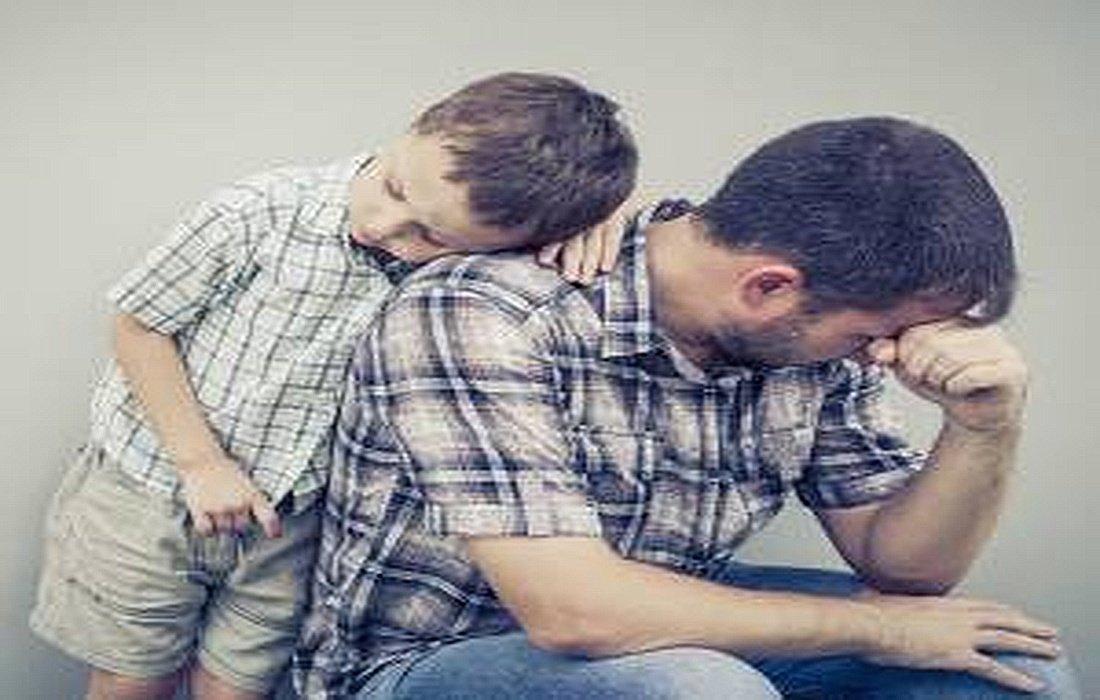Cry in front of your children because it is good for them
Strong people express their feelings, and crying is one emotion we should not be afraid to show. But the question is, how much of our emotions should we reveal to our children?
- Why can we cry in front of children?
- What do we teach them by crying?
- Should we express our sadness in front of them, or is it better to do this behind closed doors?
Psychologists talk about the lack of emotional intelligence among teenagers and children, whichCrying parentsthey have never witnessed, so if you are a caring parent, do not miss this part ofchild upbringingat all.
What role do emotions play in our lives, and what do we teach our child when we cry?
Parents want to appear strong in front of their children, believing they should act like superheroes and fully control their emotions. However, this mindset is not beneficial for your children. Instead, show them that you can indeed feel sad sometimes. It is perfectly fine to cry in front of them; we will explain why in this article:
You are human, not a superhero
Your children need to know that feeling sad is not unusual. Kids sometimes feel overwhelmingly sad and wonder if others experience the same emotions. They might think that crying or feeling sad means they are weak, leading them to hide their feelings. But this approach does not make them strong. Instead, seeing their parents cry will teach them that crying is not a sign of weakness; it is a natural way for humans to release their sadness.

Should parents cry in front of their children?
Create mutual empathy
When your child cries, your shoulders are always there to support them. It’s perfectly fine if they offer the same comfort to you. For example, if you cannot hold back tears while watching a sad movie with your child, try not to hide away in another room. Staying with your child will help foster a strong bond of empathy between you two. If you’re really upset and can’t stop crying, reassure them that you will feel better soon and that they need not worry.
**SelMagzIt is advised that if you are crying in front of your child, explain the reasons for your tears. Make sure to adapt your explanation according to your child’s age and comprehension level. Additionally, try not to delve too deeply into distressing details, as this may scare or worry them.**
Crying is a natural thing
Crying is a natural behavior for everyone, and it is important for children to know that their parents sometimes smile and are happy while also feeling sadness, exhaustion, or disappointment at times. When children witness us crying, it allows them to understand difficult emotions. They learn that it’s okay to cry when they need to, and there is no reason to feel embarrassed or insist on hiding or apologizing afterward.
Crying does not mean we will suffer permanently
There are many reasons to cry (fatigue, joy, pain), but if our tears come from sadness, we can reassure our children that we will be happy again soon; crying is a temporary emotion, not a permanent one.
Crying does not signify weakness
Many of us ignore our emotions completely and do not permit ourselves to cry. We fear that crying makes us weak and worry about others’ opinions. However, strong people are not those who suppress their feelings.
Being strong does not mean being unyielding; it means being adaptable and open to vulnerability. We can teach our children that a truly strong person is someone who asks for help when needed, cries in sadness, and laughs in happiness.

Crying does not indicate weakness
Emotions are not inherently bad
Emotions are neither good nor bad, but our actions can be. We need to teach our kids that if they’re not invited to a birthday party, they can feel sad, but they shouldn’t yell at their friend for it the next day. It’s okay to feel hurt if a sibling doesn’t share their toys, but they shouldn’t hit them or say unkind things.
Doing the right thing can sometimes be challenging
Often, making the right decision can be tough. Kids can turn down invitations to risky activities from friends, which shows they shouldn’t always give in to their emotions. Watching their parents resolve conflicts can help children learn how to make wise choices and give them an advantage in the future.
There are steps we can take to feel better
Sometimes tears appear when facing harsh realities in life, like a family member getting into an accident or being seriously ill. These circumstances can be very painful.
This does not mean we should get lost in our pain and avoid asking anyone for help. During tough times, it’s important to guide them in strengthening their emotional resilience and approaching life’s challenges with patience and awareness. When we deal with difficult feelings, we will feel our family’s love and support stronger than ever.
We always have the chance to show love
Children need to understand that their parents have faced many challenges in life, but love always exists behind those disappointments. They should learn how healthy communication works; we can teach them the importance of cooperating, staying connected, and being open to each other.

Expressing love to children
You can overcome hardships
Tears are our tools for moving forward, making decisions, asserting ourselves, changing jobs, and more. It’s vital to confront tough times, embrace them, and understand that we need them for personal growth. We should teach them that after failing, they can rise again, and love can still follow a disagreement.
We should find answers within ourselves
Tears are precious because they stem from truths that resonate deeply within us. They should understand that their crying is personal and not influenced by others, so they shouldn’t bother about others’ judgments.
Protect ourselves from illness
Research has shown that crying is vital for our health as it helps release pain and prevents health issues. If we educate children about this early on, they will carry these lessons into their teenage years; otherwise, it may be more challenging for them to learn as adults.
What emotions can we share with children without making them upset?
In child and mother psychology, it’s noted that crying is a behavior that can be demonstrated in front of children. Healthy emotions can flourish at home. Talk to children about your feelings, help them explore different emotions, and understand how feelings affect themselves and others. We need to explain to children that crying releases negative and dangerous energies from within us, paving the way for tranquility.

Cry in front of your children as it benefits them
So why should we hide it from our children?
Is it okay to argue in front of our children?
Children are not toys. By the time we want to resolve things, they have probably already figured out what happened in the room. But does this mean it is acceptable to argue in front of them?
This topic can be delicate; it’s acceptable to argue in front of children only if done properly. Allowing children to see how we handle conflicts can be very educational. Yelling without any reason is not a proper or educational way to resolve issues and does not help improve the situation. The correct way to approach conflict is through discussion and exploring ways to resolve the issue at hand. It shouldn’t be too hard, but it does require practice. Teach them that we don’t have to agree with everyone, but we should listen to others and respond calmly and respectfully. If you find it hard to stay calm in the moment, take a short break and return five minutes later; this will greatly help your child.







